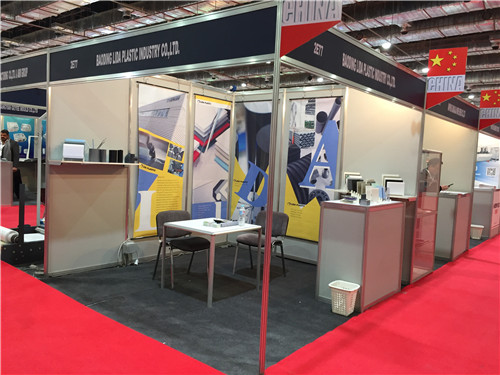Nov . 16, 2024 05:04 Back to list
hdpe welding rod 4mm
The Importance of HDPE Welding Rods in Modern Applications
High-Density Polyethylene (HDPE) is a widely used plastic known for its high strength-to-density ratio, making it ideal for various applications, from packaging to construction. Among the numerous forms of HDPE available, the HDPE welding rod, particularly in a diameter of 4mm, holds significant importance in industries that require durable and reliable connections of polyethylene materials. This article explores the advantages, applications, and effective usage of 4mm HDPE welding rods in modern manufacturing and maintenance processes.
Understanding HDPE Welding Rods
HDPE welding rods are elongated strips of HDPE material that are primarily used for welding and repairing HDPE products. These rods become essential in situations where joining two or more pieces of HDPE is necessary, ensuring a strong bond that can withstand various environmental conditions. The process typically involves heating the welding rod and the surfaces of the existing HDPE components until they reach the melting point, allowing them to fuse together seamlessly upon cooling.
Advantages of HDPE Welding Rods
1. Durability and Strength One of the primary reasons for using HDPE welding rods is their ability to create strong joints that retain the properties of the original material. When properly welded, HDPE joints are often stronger than the material itself, which enhances the longevity of the welded structures.
2. Chemical Resistance HDPE is known for its exceptional resistance to chemicals, making it suitable for various environments, including those that involve exposure to corrosive substances. Using HDPE welding rods ensures that the integrity of the welded joint remains intact even in harsh conditions.
3. Ease of Use A 4mm welding rod is practical for various welding applications, especially in repairs and smaller projects. This size allows for precision and control, making it easier to work with for both professional welders and DIY enthusiasts.
4. Thermal Stability HDPE has good thermal stability, which means that it can withstand high temperatures without deforming or degrading. This property is essential for projects that may experience fluctuations in temperature, ensuring the joints remain effective over time.
5. Cost-Effective Using HDPE welding rods can significantly reduce repair and maintenance costs. Instead of replacing entire sections of HDPE products, targeted welding with 4mm rods can restore functionality, saving both time and money.
Applications of HDPE Welding Rods
HDPE welding rods find applications in various fields, including but not limited to
hdpe welding rod 4mm

- Infrastructure In construction and civil engineering, HDPE is often used for piping systems, geomembranes, and structural components. Welding rods are crucial for joining sections, repairing leaks, or reinforcing existing structures.
- Manufacturing Many manufacturers utilize HDPE welding rods in the production of containers, tanks, and custom products. The welding process allows for precise shaping and assembly of components tailored to specific requirements.
- Aquaculture and Agriculture HDPE is frequently used in the construction of water tanks, irrigation systems, and ponds. Welding rods facilitate the joining of larger panels or sections, ensuring that these structures can hold water without leaks.
- Waste Management HDPE is also a popular material in landfill liners and waste containment systems. The ability to weld HDPE ensures that these systems are robust and secure, preventing leakage and environmental contamination.
Best Practices for Using HDPE Welding Rods
To maximize the effectiveness of HDPE welding rods, it is essential to follow best practices during the welding process. These include
1. Surface Preparation Ensure that all surfaces are clean and free from contaminants. This preparation is critical for achieving a strong weld.
2. Use of Appropriate Equipment Employ the right welding tools, such as hot air welders or extrusion welders, to maintain the correct temperature during the process.
3. Control Temperature Monitor the temperature closely; overheating can damage the HDPE while underheating may result in weak joints.
4. Post-Weld Inspection After welding, inspect the joints for any flaws, ensuring that they meet the required standards before the assembly is put into service.
Conclusion
In summary, 4mm HDPE welding rods play a vital role in the effective joining and repair of HDPE materials across various industries. With their durability, chemical resistance, and ease of use, these welding rods provide a reliable solution for both industrial applications and everyday repairs. As industries continue to evolve, the significance of HDPE and its welding capabilities will undoubtedly remain integral to the future of material use and management.
-
Durable PP Rigid Sheet: Lightweight, Chemical Resistant Solutions
NewsAug.21,2025
-
PVC Grey Sheet for Extraction: Chemical Resistant & Durable
NewsAug.19,2025
-
Durable PVC Pipe Fittings for Plumbing & Irrigation Needs
NewsAug.18,2025
-
HDPE Steel Belt Reinforced Spiral Corrugated Pipe | High Strength
NewsAug.17,2025
-
HDPE Pipe Fittings: Durable, Leak-Proof Solutions
NewsAug.16,2025
-
Premium CPVC Sheet: High-Temp & Chemical Resistant Solutions
NewsAug.15,2025

